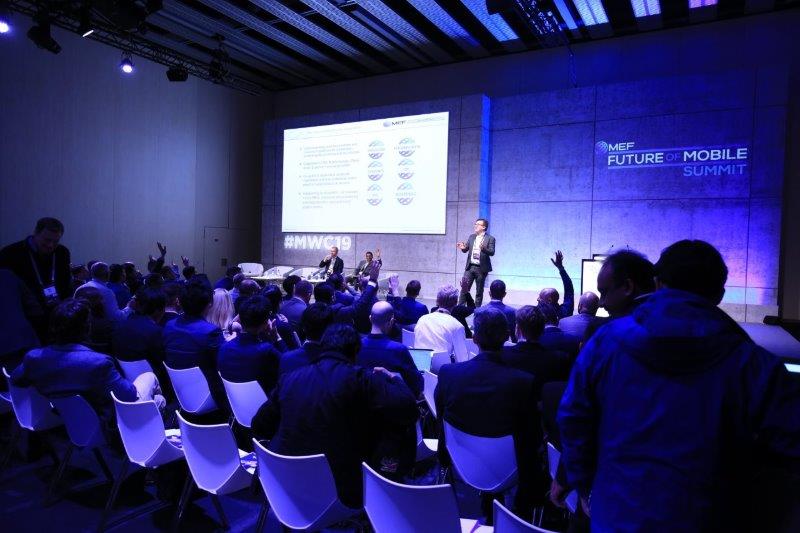In today’s messaging landscape, delivery is no longer the benchmark of success—it’s just the starting point. MEF Programme Director Nassia Skoulikariti explains why as customer expectations evolve, messaging providers must shift their focus from technical performance to delivering seamless, trust-driven experiences across every touchpoint.
Have you noticed how a message that reaches your phone but fails to connect with you might as well have never been sent?
When I talk to messaging providers across the industry, I’m struck by how many still celebrate high delivery rates while their customers quietly struggle with trust issues, response difficulties, and the cold feeling of interacting with a system rather than a brand. That technical achievement, getting the message delivered, quickly loses its meaning when the human connection fails.

The messaging industry is undergoing a fundamental shift. Delivery isn’t the finish line anymore. It’s just where the real work begins.
The New Messaging Playbook
For years, messaging providers competed primarily on price, coverage, and uptime. That strategy worked well enough when enterprises were focused solely on getting messages to recipients. Today, that playbook is wearing thin.
Recent research reveals that 81% of companies now expect to compete primarily on customer experience. Messaging has entered this same territory.
The MEF Omnichannel and Customer Experience interest group is already addressing these challenges, sharing insights, and establishing new benchmarks for excellence. If you haven’t yet joined this community, consider this your invitation to participate in shaping the evolving narrative of messaging excellence.“
Enterprise clients aren’t just purchasing message delivery anymore. They’re investing in a comprehensive experience built around trust, responsiveness, and transparency. While capabilities can be matched and pricing can be undercut, customer experience, built consistently over time, creates a competitive advantage that’s much harder for competitors to replicate.
Forward-thinking leaders in the space recognize this shift and are adapting their strategies accordingly. Those who don’t risk falling behind in a rapidly evolving market.
The Quiet Erosion of Trust
You might not see the cost of poor customer experience on your balance sheet right away. Instead, it manifests in seemingly small moments that add up over time:
A confusing or entirely missing delivery report. A support issue that takes days rather than hours to resolve. An interaction that feels completely different across channels.
Each of these moments chips away at client confidence. What’s concerning is that once this erosion begins, it rarely stops on its own. Even more troubling are hidden issues like SMS fraud, which introduce risks extending far beyond technical performance metrics.
Large enterprises have already reported significant financial losses due to fake traffic and fraudulent messaging practices.
Can you rebuild trust once it’s broken? Certainly, but it’s a long and uncertain process. In today’s competitive environment, few businesses can afford that kind of delay.
What Exceptional CX Looks Like in Today’s Messaging Environment
The messaging companies showing the most resilience are reimagining the experience from the ground up:
Clear, real-time delivery insights help clients feel informed and in control of their communications. When a client can see exactly what’s happening with their messages as it happens, their confidence in your service grows exponentially.
Consistency across SMS, RCS, WhatsApp, and other channels ensures customer conversations feel cohesive rather than fragmented. Your clients’ customers shouldn’t feel like they’re starting over when they switch from one channel to another.
Proactive communication transforms potential challenges into opportunities to demonstrate reliability. When you alert clients to issues before they discover them themselves, you transform a negative experience into a positive one.
Branded messaging creates familiarity and emotional connection, even during purely transactional moments. A simple appointment reminder can reinforce brand identity when formatted thoughtfully.
Two-way conversational capabilities shift messaging from a one-way broadcast tool to a relationship builder. When recipients can respond naturally and receive contextual replies, engagement rates typically increase dramatically.
These aren’t optional enhancements anymore. They’re rapidly becoming baseline expectations for enterprises investing in messaging services.
Where Opportunity Still Exists
For companies willing to take a fresh look at their customer experience, there’s still considerable room to differentiate, even in an increasingly crowded market.
Mapping the full customer journey often uncovers hidden friction points that slow adoption and gradually erode satisfaction. Have you looked at every touchpoint through your clients’ eyes recently?
Simplifying technical onboarding helps convert developers from hesitant users to active advocates. When implementation is intuitive, developers become your most powerful champions within their organizations.
Moving beyond basic delivery metrics to provide actionable intelligence offers new ways to create value. Don’t just tell clients their messages were delivered, help them understand what actions those messages drove.
Embedding strong security and transparency practices builds resilience that protects both clients and your brand equity. In a world where trust is increasingly fragile, security isn’t just a technical requirement, it’s a business differentiator.
The companies implementing these approaches today are establishing standards that others will eventually have no choice but to follow.
Technologies Raising the Bar Even Higher
Emerging technologies are elevating expectations further:
AI is advancing personalization beyond static profiles, enabling dynamic message adaptation based on live customer behavior. Messages that respond to real-time context perform substantially better than those based on historical data alone.
Omnichannel conversations are evolving into seamless, continuous experiences across SMS, apps, chatbots, and web channels. The walls between these channels are disappearing from the customer perspective.
Rich communication formats like RCS are transforming simple notifications into branded, interactive engagements that deepen loyalty. When a message can include interactive elements, the engagement potential multiplies.
The companies building these capabilities now will be the ones defining the future of messaging, not scrambling to catch up.
The Questions That Matter Now
In this rapidly evolving market, delivery rates alone no longer tell the full story. The questions that truly matter are becoming clearer:
How easily can customers trust the messages delivered through your platform?
How seamless is the experience you provide across every channel you support?
How prepared is your organization to move beyond simple transactions and create genuine value through messaging?
The MEF Omnichannel and Customer Experience interest group is already addressing these challenges, sharing insights, and establishing new benchmarks for excellence. If you haven’t yet joined this community, consider this your invitation to participate in shaping the evolving narrative of messaging excellence.
The future of messaging belongs to those who recognize that delivery is just the beginning of the customer experience. How are you transforming your approach to meet these new expectations?





